Video from Chile!
As the Chilean grapes start arriving….Here is a video from our grower – Correo Albano Vineyards – talking about the history of his vineyard, the region of Curico, and the 2017 Harvest. Cheers to 5 generations of growing the best wine grapes of Chile!
The Winemaker’s Think Tank: Vol 14 – What temperature should my juice be before yeast is added?
What’s the Winemaker’s Think Tank?
Every Thursday we will post about a few frequently asked questions that our winemaker has answered. If you have a winemaking question you would like to have answered, please email us at support@juicegrape.com and we will try to get into next week’s post. Cheers! 🙂
What temperature should my juice be before yeast is added?
The ideal temperature for most yeast strains to conduct a successful fermentation is between 60-70 degrees Fahrenheit. Be sure that the juice is at least 60 degrees before adding any yeast to ensure that the yeast will not die of cold shock when added to the wine.
Check out Musto’s Youtube Video below for Step by Step Yeast Starter Instructions from Winemaker & Bootcamp Professor Frank Renaldi.
We hope this information helps with your winemaking. If you have any follow up questions or winemaking questions in general, please email us at support@juicegrape.com.
Notes from our Winemaker Frank Renaldi about the Chilean Sauvignon Blanc: After the Press
Notes from our Winemaker Frank Renaldi about the Chilean Sauvignon Blanc:
After the Press
“Adjusted Brix to 21.5 (11.8% alcohol). Adjusted with Tartaric Acid to get pH = 3.24 and TA = .60. Will have to acidify after fermentation. Could have adjusted further, but ta would still be low (desired .7 – .9). Used Vin13 yeast – Very slow start. Took over 24 hours to get started. Still at 58 degree with a slow cool fermentation. No big nose yet. Looking forward to reporting more on the results once fermentation has completed.”
Don’t forget to sign up for the Spring Bootcamp with winemaker Frank Renadli! Learn how to make great wine at home in just 5 weeks!
Notes from our Winemaker Frank Renaldi about the Chilean Sauvignon Blanc
Notes from our Winemaker Frank Renaldi about the Chilean Sauvignon Blanc
“Good day, Grapes looked really good. No mold, clean, juicy. Let set with enzyme for 5 hours. Good press. Tomorrow will measure, adjust and add goodies and pitch yeast.” – We are sold out of the white grapes but still have some reds grapes and white & red juices available Give us a call at the office to secure your order!
Don’t forget to sign up for the Spring Bootcamp with winemaker Frank Renadli! Learn how to make great wine at home in just 5 weeks!
The Winemaker’s Think Tank: Vol 13- What’s the best way to add sulfite to my wine?
What’s the Winemaker’s Think Tank?
Every Thursday we will post about a few frequently asked questions that our winemaker has answered. If you have a winemaking question you would like to have answered, please email us at support@juicegrape.com and we will try to get into next week’s post. Cheers! 🙂
What’s the best way to add sulfite to my wine?
There are two effective methods of sulfite addition to wine. Campden tablets are small tablets of sulfite that are a pre-measured dose meant to add 25ppm to 5 gallons of wine. The drawback to these tablets is that sometimes they do not dissolve completely. The most effective way to add sulfites into wine is via powdered potassium metabisulfite. Winemaker Magazine offers a sulfite calculator on their website that is very useful in helping a winemaker figure out an exact dosage of sulfites for their wine. To use this calculator, one must know the volume and pH of the wine to be treated. The average rate of application for potassium metabisulfite is ¼ tsp/5 gallons to raise the sulfites by 50ppm. The sulfite calculator is a better option as it will help you find and exact dosage needed for your wine contingent upon the wines’ pH and stability.
We hope this information helps with your winemaking. If you have any follow up questions or winemaking questions in general, please email us at support@juicegrape.com.
The Winemaker’s Think Tank: Vol 10 – Making Wine from Pinotage Grapes

What’s the Winemaker’s Think Tank?
Every Thursday we will post about a few frequently asked questions that our winemaker has answered. If you have a winemaking question you would like to have answered, please email us at support@juicegrape.com and we will try to get into next week’s post. Cheers! 🙂
We all know that feeling. You made it through the holidays, your wines are resting peacefully in your cellar, but there’s something missing. You’re getting that “itch.” You go down to your cellar and see that a few of your barrels are empty, and that French oak barrel shouldn’t be empty too long . . . so you start Googling and then you find that there is a spring wine season! Your prayers are answered! You can scratch that winemaking itch and get moving on your next vintage. Believe me, your French oak barrel will thank you.
Not all winemakers know this but Musto Wine Grape brings in wine grapes and juices from South America and South Africa in the springtime. Specifically Pinotage and Cabernet Sauvignon from South Africa, Malbec from Argentina, and Cabernet Franc, Cabernet Sauvignon, Carmenere, Merlot, Malbec, Petite Verdot, Pinot Grigio, Pinot Noir, Sauvignon Blanc, Syrah, and Viognier from Chile.
Making wine from these grapes and juices is very different than the California grapes and juices. The grapes have a much longer ride and the regions where the grapes are grown give off very different characteristics. Argentinean and Chilean grapes tend to have a lot of fruit-forward notes, dark berry flavors, with cigar and earthy undertones; as opposed to the South African grapes that have a brighter fruit profile such as cranberry and raspberry.
In the spring of 2016 we decided to make a Pinotage. Neither of us had ever made one before and we were excited to try out a new wine grape variety and region. Pinotage is a red wine grape that is South Africa’s signature variety. It was bred there in 1925 as a cross between Pinot Noir and Cinsault (also known as Hermitage) – thus the name Pinotage. It is the second most planted grape in South Africa.
As a winemaker it was very exciting to get a chance to make wine from South Africa. It was also exciting to make a wine we have never made before. The grapes came in 20 lb. (9 kg) cases and were simply immaculate. The berries were in very good condition with no mold or decay. The one thing we did notice about the grapes is the skins were different in texture. They chewed for a long time and can almost be described as leathery. We have never seen that on a California or South American grape before.
The initial numbers on the grapes were workable. The Brix came in at 25, which would result in an alcohol of 13.75%. There was no adjustment needed on the sugar level. The pH and titratable acidity (TA) came in at 3.91 and 6.2gm/L respectfully. Tartaric acid was added to get the pH to a desired level. One thing we have learned is every grape is different – they cannot be handled by mathematical formulas only. Always bench test your adjustments; the results are not always linear. Our goal is to get the pH AND the TA to the ideal levels. This is not always possible, but an experienced winemaker will have to make the best decisions.
After adding tartaric acid, we ended up with a pH of 3.5, which is an ideal number. The TA only rose to 7.5 gm/L. As we stated above these grapes did not show the linear relationship between the pH and TA – meaning it is not always true what the pH goes down, the TA goes up.
So these were good starting numbers to release the grapes for fermentation. Something Frank and I swear by is always making your adjustments before fermentation. Once fermentation starts it is a moving target. And once the wine has completed fermentation, you really should not be making major pH/TA adjustments. We went with D254 yeast, simply because it always does a good job and we have never made these grapes before. Next year we think we might try the BDX yeast.
We processed these grapes with the same protocol as a California vinifera. We cold soaked the grapes 3–4 days. Cold soaking not only gives you time to work on the wine before fermentation, but allows the wine to “bleed out” and stabilize. The skins break down and you get the tannins and color to stay with the must. While the grapes were in a cold soak we made the Brix, pH, and TA adjustments. We also added normal additives such as tannins, Opti-red, oak powder, etc.
The fermentation went well. A normal 3–4 punch downs a day is a good protocol. We checked the temperature every morning and evening. It ran from 70–80 °F (21–27 °C) the entire fermentation, a good temperature for reds.
The pressing went well. The skins were still like little pieces of leather – we will never forget that about Pinotage. The fresh pressed juice had a cotton candy nose to it, which we found unusual but pleasing. It has faded off to a bright red berry nose as time has gone on.
Once the wine was racked 2–3 times, it was moved to a Hungarian barrel for 8 months. It is now back in the tank for final adjustments before bottling. The final numbers are all good. The pH is 3.52, the TA is 0.62 and the alcohol level is 14%.
Tasting Notes:
The nose has red berries such as raspberry and cranberry. It is a clean nose with a “fruity” character.
The palate had red licorice and tobacco, and reminds me of a Pinot Noir. The tannin level is medium, which we find perfect for this wine. Big tannins would have overtaken this particular lot of Pinotage. It is an easy drinking wine. It has a sweet fruity presence, yet there is no residual sugar. This will make a good red for the summer for those red drinkers who refuse to go to whites at that time.
So there it is. We made our first South African wine from grapes. It was exciting and a learning experience for both of us. Each season we will try to process them differently to create other sides of this wonderful wine — Pinotage!
You have many winemaking options during the spring winemaking season. Don’t let a unique winemaking opportunity pass you by! If you have any questions about the spring wine season feel free to email me at cmusto@juicegrape.com.
Article by Christina Musto & Frank Renaldi for Winemaker Magazine. You can see the entire article by clicking HERE.
We hope this information helps with your winemaking. If you have any follow up questions or winemaking questions in general, please email us at support@juicegrape.com.
News from the field as of 3/3/2017…..
News from the field…
South African Pinotage: Harvested and in transit. The Pinotage should hit the port around March 28th.
South African Cabernet: Harvest is about 10 days out. It will most likely arrive sometime in mid-April.
Argentina Malbec: Also about 10 days out as of right now. We think the grapes should arrive sometime in mid to late April.
Chilean grapes: White grapes will start to harvest next week. The white grapes should arrive around last week in April and reds grapes should arrive around the first or second week in May.
Southern Hemisphere Juices: Arriving mid to late April.
The prices for the Spring products are here and we are taking Pre-Orders via email and over the phone. Please feel free to contact us at sales@juicegrape.com or 877.812.1137 to place your pre-order.
We are looking forward to working with you this Spring Harvest! Keep an eye on our Facebook Page and Harvest Tracker for more harvest information and upcoming wine classes.
The Winemaker’s Think Tank: Vol 9 – How long will my wine last?
What’s the Winemaker’s Think Tank?
Every Thursday we will post about a few frequently asked questions that our winemaker has answered. If you have a winemaking question you would like to have answered, please email us at support@juicegrape.com and we will try to get into next week’s post. Cheers! 🙂
How long will my wine last?
All wine ages differently. Certain varietals benefit from aging, others are meant to be consumed quickly. Generally, the more tannic the wine, more it will benefit from aging. Other factors influence a wine’s potential to age as well. If the winemaker chooses not to add sulfites to the wine (not recommended), the wine will not age as well and should be consumed within a year. If the proper level of sulfites are added, the wine stored at an appropriate temperature (55-62 degrees Farenheit), and not exposed to light, it should be able to age for many years. Some varietals that benefit from aging are Chardonnay, Cabernet Sauvignon, and Malbec. Some varietals that do not necessarily benefit from aging are Gewurztraminer, Sauvignon Blanc, and Cayuga.
We hope this information helps with your winemaking. If you have any follow up questions or winemaking questions in general, please email us at support@juicegrape.com.
2017 Southern Hemisphere Harvest Update E-Book
Extra, extra! Read all about it! The Spring Harvest will be here soon! Catch up on what Musto Wine Grape Company has in store for your Spring vintage by clicking the link below.
The Winemaker’s Think Tank: Vol 7 – Grape Yield
What’s the Winemaker’s Think Tank?
Every Thursday we will post about a few frequently asked questions that our winemaker has answered. If you have a winemaking question you would like to have answered, please email us at support@juicegrape.com and we will try to get into next week’s post. Cheers! 🙂
When it comes to making wine, often there is nothing more exhilarating than sampling the fresh grapes as they come in and selecting the varietals that will best suit your individual winemaking needs. Once you have selected the varietals that you would like to make that season, the most often the next question is “How many grapes will I need to make my desired amount of wine?”. The answer changes slightly depending on the origin of the grapes. South American producers fill their crates with 18lbs of grapes. This typically requires the winemaker to purchase 4 crates (18lbs each) to yield 5 gallons of wine. The same formula roughly applies to South African grapes as well, with their grapes being packed 20lbs per crate. Obviously this will yield the winemaker a bit more juice, but the overall formula is applicable.
Fall harvest from the northern hemisphere gives us slightly different guidelines to follow for estimating yield. North American producers have larger crates, packed 36lbs/crate. On average, each crate yields 2.5 gallons of juice, the winemaker needing two crates per five gallons of desired wine. Seasonal growing conditions apply to the yield as well, rainfall having the most profound effect upon juice yield. Also, premium growing areas where the grapevines grow under stressed conditions, resulting in premium fruit will yield significantly less juice than grapes grown in irrigated fields. We suggest purchasing one additional crate per desired 5 gallons of finished product. The two crates per five gallon rule is a safe assumption when estimating juice yield, as it is more of a conservative estimate of juice yield. We often hear reports of a higher yield rate for certain west coast varietals. Berry size will affect the yield of juice as well. Pinot Noir and Grenache berries are significantly larger than Cabernet Sauvignon and Petit Syrah berries, often yielding up to 10% more juice. While a certain level of experience and research can aid in the estimated juice yield from your grapes, the basic rule of 4 crates per 5 gallons for South American/African produce and 2 crates per 5 gallons for North American produce is an easy means of determining how much produce you will need.
We hope this information helps with your winemaking. If you have any follow up questions or winemaking questions in general, please email us at support@juicegrape.com.






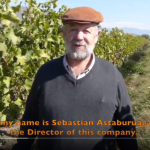
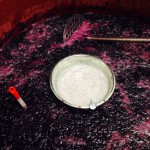
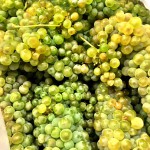
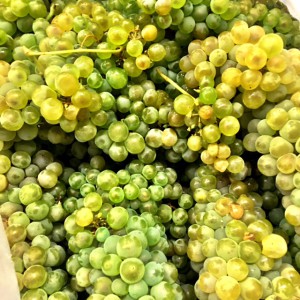
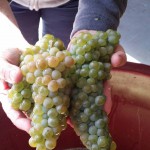
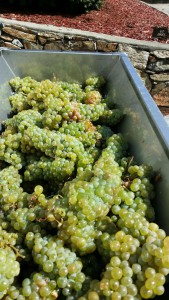
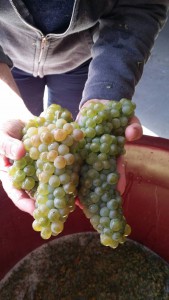


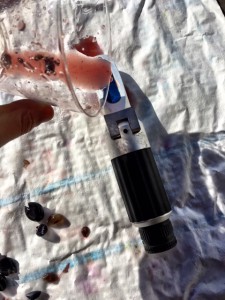
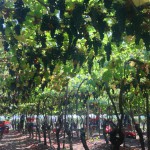
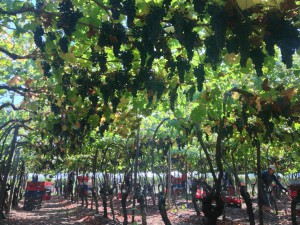
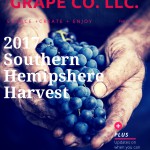
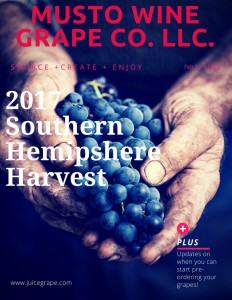
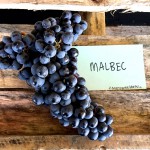
Recent Comments